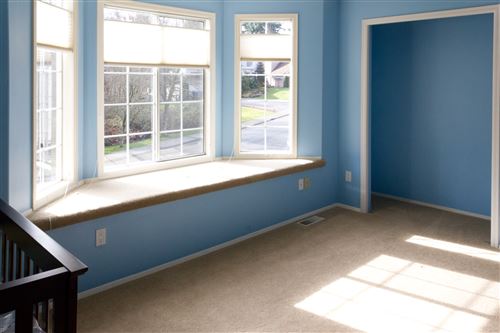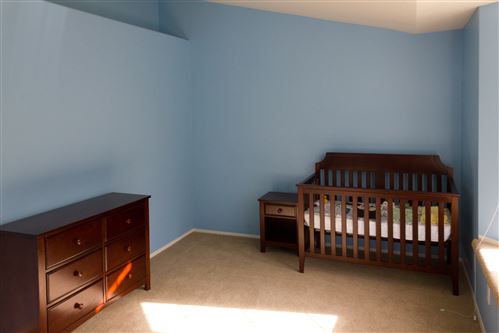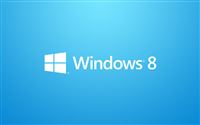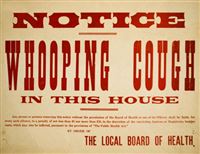 Shortly after we got married, Tyla got her dream car: a Volkswagen Beetle. She loved that car, but the idea of a car seat and a baby in it didn’t thrill either of us so it was time to trade it in. We are now the proud owners of a 2013 Ford Escape SEL 4WD! It’s fun to see Tyla driving a brand new car for the first time in her life. When we started our test drive it had 22 miles on it. Also, we finally have a vehicle which will comfortably seat four adults!
Shortly after we got married, Tyla got her dream car: a Volkswagen Beetle. She loved that car, but the idea of a car seat and a baby in it didn’t thrill either of us so it was time to trade it in. We are now the proud owners of a 2013 Ford Escape SEL 4WD! It’s fun to see Tyla driving a brand new car for the first time in her life. When we started our test drive it had 22 miles on it. Also, we finally have a vehicle which will comfortably seat four adults!
Edge vs Escape
We had originally been shooting for an Edge but we just couldn’t justify the extra cost over the Escape. The interior dimensions on the Escape are very similar to the Edge and that was one of our main criteria. I had also liked the Edge because of it’s AWD which is very nice in the winter in the mountains or in the hills around town when it does snow/ice. I started changing my mind about the Edge when I learned that the Escapes have an intelligent 4WD system. I’m still not clear on why one is called All Wheel Drive and the other is Four Wheel Drive. Both are engaged at all times and direct power to whatever wheels have the most traction. For example, when you take off from a stop on dry pavement with the Escape, power starts at the rear wheels since they have more traction from the weight transfer. As your speed levels off, the power shifts to the front of the car.
Another goal for the Edge was to have something that could tow a utility trailer with my motorcycle on it. The Edge can tow 3000 pounds. The Escape can tow 3500 pounds with the 2.0L engine and 2000 pounds with the 1.6L engine. After going back and forth quite a bit, we landed on the smaller engine and no factory installed hitch. If I really need to tow something with the Escape, I can install a hitch for a couple hundred bucks and get it done. Alternately I can buy some booze and bribe one of my many local friends/relatives who have trucks.
Engine Technology
Some of you are probably thinking it’s crazy to put a 1.6L engine in an SUV. The secret is that it’s Ford’s “EcoBoost” engine which they’re putting in a lot of vehicles across their product line. They deliver more horsepower and torque with smaller engine displacement by adding turbochargers into the system. If you didn’t know the engine was so small, you’d probably never notice it until you stopped at the pump and realized you got 30+ mpg on your road trip. The four cylinder 1.6L engine puts out 178hp compared to the non EcoBoost 2.5L engine that supplies 168hp. Better mileage and more power? Sign me up.
One catch with the EcoBoost engine is that to get the full power numbers out of them, you need to run premium gas. It runs fine on normal gas, but you lose 4-5% horsepower. It sounds like people generally run the lower octane gas and then put the good stuff in if they need to tow or are in some other demanding situation.
Warranty
I think my biggest concern with the car is not the engine or the drivetrain, but the gadgets. They’re awesome, and in most cases they make a lot of sense, but they’re just more things that can break. For the first time ever in my life, I succumbed to the extended warranty (once I had talked him down to their internal employee pricing numbers) because I believe that I’ll come out ahead in the long run. I suppose that’s somewhat of a negative vote of confidence for the gadgets, but this also is the first year for the completely redesigned Escape. And while it’s using tech and parts from other successful cars in the Ford lineup, Dad always said to give them a year or two to work out the bugs before jumping in.
Choosing Ford
So we’re back in the Ford family (my uncle works there so most of the extended family drives Fords.) It honestly took a LOT to get me to not buy a Subaru Forrester or Outback as our family vehicle. I absolutely love my Subaru and we have an incredible local mechanic who works on my car. While our family has always had good luck with Fords in the past, the real tipping point for me was the My Ford Touch system and the various technology options available on it. I haven’t seen any other car manufacturer that can match the complete package that Ford offers these days in terms of engine/drivetrain tech and interior tech. Additionally they’re a US company and they’re the only US company that didn’t take a government bailout. Those are traits I want to support with my dollars.
This post is getting long enough so I’ll cut it off here, but tomorrow I’ll share some thoughts on the car buying process and then once I get through all the various buttons and screens in the car, I’ll have some posts about the tech inside.



 Some of the buzz around Windows 8 is that Microsoft should let people go straight into the desktop mode without first landing on the new Windows 8 start screen. I can understand the desire to never ever change anything (while complaining that they’re not “innovating”), but this one is a bit silly. What’s the first thing you did in Windows 95 through Windows 7 when you started your computer? You either clicked one of your shortcut icons to start an app or you pressed the start button to find an app that way. It’s EXACTLY THE SAME with Windows 8. You can either click one of the shortcut icons (tiles) that are on your start screen, or you can find an app by typing and searching for it. If anything, you now have fewer clicks and you also get the added benefit of seeing a screen full of information that you’ve tailored to your interests.
Some of the buzz around Windows 8 is that Microsoft should let people go straight into the desktop mode without first landing on the new Windows 8 start screen. I can understand the desire to never ever change anything (while complaining that they’re not “innovating”), but this one is a bit silly. What’s the first thing you did in Windows 95 through Windows 7 when you started your computer? You either clicked one of your shortcut icons to start an app or you pressed the start button to find an app that way. It’s EXACTLY THE SAME with Windows 8. You can either click one of the shortcut icons (tiles) that are on your start screen, or you can find an app by typing and searching for it. If anything, you now have fewer clicks and you also get the added benefit of seeing a screen full of information that you’ve tailored to your interests. When Jay came through town, he said we needed to go to Home Depot to buy some hardware to make a game he’d just learned called bimini ring. The basic idea is that you have a ring connected to a string. You swing it forward and attempt to get it to hook onto a hook sticking out of the wall. Simple, but complicated!
When Jay came through town, he said we needed to go to Home Depot to buy some hardware to make a game he’d just learned called bimini ring. The basic idea is that you have a ring connected to a string. You swing it forward and attempt to get it to hook onto a hook sticking out of the wall. Simple, but complicated! Today is a big day for Tyla. It’s her last full day of office work! Soon she’ll be starting her new job: full time Mom! Every couple makes their own decisions, but personally I’m not only thankful that my wife wants to stay home to raise our child but also that we’re in a position where that’s possible. She’s going to transition from dealing with a doctor’s office full of people who are a mix between fun and cranky to a child … who is probably the same. Thank you Tyla! You’re going to make an incredible mother.
Today is a big day for Tyla. It’s her last full day of office work! Soon she’ll be starting her new job: full time Mom! Every couple makes their own decisions, but personally I’m not only thankful that my wife wants to stay home to raise our child but also that we’re in a position where that’s possible. She’s going to transition from dealing with a doctor’s office full of people who are a mix between fun and cranky to a child … who is probably the same. Thank you Tyla! You’re going to make an incredible mother. In the past you’ve had to shell out hundreds of dollars to get the Microsoft Office suite, or maybe you got it for a little less with your new computer. Then you’re stuck with that version no matter what versions arrive later. And what if you have five computers in your house? Well either you break the law or you buy a bunch of copies. It’s a big cost.
In the past you’ve had to shell out hundreds of dollars to get the Microsoft Office suite, or maybe you got it for a little less with your new computer. Then you’re stuck with that version no matter what versions arrive later. And what if you have five computers in your house? Well either you break the law or you buy a bunch of copies. It’s a big cost. Note: I realize that some of you are anti-vaccine. This post is being written because I find it amazing that we can have an epidemic like this, not necessarily to try to change your mind about vaccines.
Note: I realize that some of you are anti-vaccine. This post is being written because I find it amazing that we can have an epidemic like this, not necessarily to try to change your mind about vaccines.
Car Buying Experience
But one part of the car experience is still stuck in ancient times: sales. I can sometimes enjoy bartering, but I rarely talk to a car salesman and don’t walk out feeling like I need to take a shower. Their tactics haven’t changed in decades. Go read this (long, but valuable) article from edmunds before you walk into a dealer and then watch the salesguy try the various tricks listed in the book. You’ll switch from feeling like you’re getting hustled to feeling annoyed at the various attempts to hustle you. It’s obnoxious, condescending and rude.
To make things worse, It doesn’t end once you argue about your trade-in and your new car. It continues into the finance guy’s office where you’re assaulted with endless add-ons like coatings for your vehicle, extended warranties, pre-paid maintenance plans, interest rates and much more. Some of the sheets presented are very clever in that they leave off the last option which is to not pay for anything extra. Tyla and I saved a couple thousand bucks after we’d set the price of the car and the trade-in by continuing to haggle on the other numbers, and that even doesn’t include the items we completely refused.
There’s not much incentive for dealers to change their strategy as this allows them to extract maximum profit from each individual customer. Flat rate, no-haggle pricing does exist to some extent. Saturn is famous for this but they still find ways to get you by making you buy extra options you didn’t want, etc. I can’t figure out why this hasn’t swept the nation yet. Maybe we haven’t reached the tipping point yet where there are enough of these dealers to raise awareness. Random studies I found on the internet say that over 2/3 of car buyers would prefer a no-haggle environment. It seems like a pretty big untapped market to me.